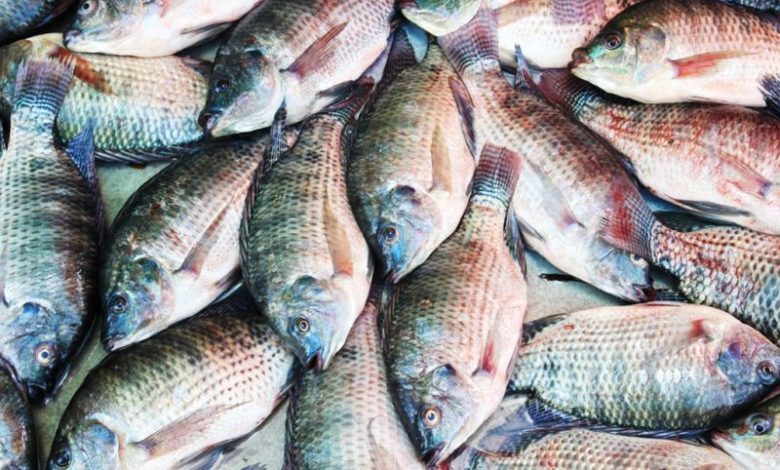
By Dumisani Nyoni
THE COVID-19 pandemic, unprecedented in modern times, has completely upended the global economy.
In an attempt to contain the spread of the virus, governments around the world—Zimbabwe included—have introduced an array of measures, including social isolation directives, limitations on business opening hours and travel restrictions.
The aquaculture sector, along with the majority of industries, has had to deal with a bleak demand outlook as well as a range of supply challenges.
With the effective shutdown of the restaurant industry, food service demand has evaporated, while retail sales have been marked by extreme volatility as periods of panic buying are followed by sustained lulls.
Online distributors are reporting increased interest as home-bound consumers explore retail alternatives. Overall, however, demand has been sharply reduced and prices have fallen for many species, particularly those that are important for the restaurant industry.
On the supply side, a labour shortage and other economic challenges including the decline in demand outlook has severely negatively affected fish production across the world.
In its latest report, the Livestock and Meat Advisory Council (LMAC) says aquaculture harvests are being delayed and stocking targets drastically reduced, while entire fishing fleets are lying idle.
Downstream activities including processors have all been affected by the lack of raw materials on top of other operational difficulties, it said.
At the same time, logistics have become costly and slow as hauliers must contend with closed or restricted road borders and health inspection delays.
“Fish industry representatives in many countries are calling for financial aid from their governments, but such measures may only provide limited relief in the face of widespread upheaval,” it said.
Industry stakeholders are also calling for regulator flexibility in terms of adjusting catch quotas and raising biomass limits and emphasising the need to rapidly understand and plan for long-term changes in the market landscape, it noted.
Zimbabwe’s exports of fish for 2020, according to LMAC, was 1 512mt, valued at US$2.96m, representing a decrease of 53% and 54% in quantity and value, respectively when compared to 2019.
Exports were dominated by frozen freshwater fish and frozen tilapia that made up 81 and 18% respectively in quantity, while in value terms, the breakdown was 69 and 16%, respectively.
In 2019, the percentage composition of frozen tilapia and freshwater fish was 51 and 57% in quantity and 44 and 46% in value.
“While initiatives to expand the export market are growing, competitive pressures and regulatory restrictions in key markets are mitigating against these efforts,” LMAC said.
Beginning in April 2021, monthly exports of fish post-lockdown restrictions were at their lowest since 2015.
Imports of fish for 2020 totalled 6 003mt, an increase of 99% over the same period in 2019.
In monetary terms, the increase was 41% from US$4.5 million to US$6.3 million. While this represents an improvement from 2019, LMAC said the import figure in quantity terms for 2020 is 53% below the 5-year average of 12 769mt.
Monthly fish imports show a sustained recovery from June 2019 but remain below 1 000mt, last achieved in July of 2018, it said.
Frozen jack and horse mackerel made up 86% of fish imports in quantity terms but 68% in value terms.
The Zimbabwe Fish Producers Association (ZFPA) believes that fish production will grow significantly, with aquaculture rivalling chicken, pork and beef industries.
With the right policies and strategies, there is enormous potential to develop fish farming in Zimbabwe, using tilapia — Africa’s own indigenous fish, which achieves good growth rates under intensive production.
Zimbabwe has relatively developed aquaculture and is one of the top 10 fish farming countries in Sub-Saharan Africa.
According to ZFPA, the country’s aquaculture sector can produce 20 000 tonnes of fish a year, creating 10 000 direct jobs and another 10 000 indirectly.
Until 2005, the country used to have some of the region’s finest kapenta fishing infrastructure.
But years of economic decline and divestment from experienced farmers have affected output.
Currently, Zimbabwe is producing approximately 15 000 tonnes of fish per year in a small number of dams.
If all the dams can be fully utilised, the country has the potential to increase fish production to almost 1,5 million tonnes per year, according to experts.
Some of the commercial fish farms in Zimbabwe include Lake Harvest Aquaculture (Kariba), The Bream Farm (Kariba), Mazvikadei Fish Farm near Banket, Clairmont Trout Farm, The Trout Farm and Inn on Ruparara also in Nyanga.
Going forward, LMAC said uncertainty still dominates the outlook, particularly with regard to the duration and severity of the pandemic in different markets.
While China has been able to return to near-normal conditions after a few months of strict lockdown, this may be more difficult in the European Union and in the United States of America, two of the world’s most important seafood markets.
“Whatever the time frame, the wide-ranging impacts of the pandemic mean that a prolonged market downturn can be expected even after current restrictions are lifted or relaxed. Luxury products and species that are primarily marketed fresh and through foodservice will be the most heavily affected,” it said.
Locally, similar constraints emanating from the pandemic and the government response to it will continue to weigh significantly on outcomes in 2021.
LMAC said the good rains received during the last quarter of 2020 and projected for the rest of the agricultural season is good news for the domestic economy and offers the best economic stimulus package to lift the livestock sector out of the deep recession experienced over the last two years.
While the 2021 National Budget Statement confirmed that macroeconomic head winds will persist over 2021 made worse by lockdown policies, LMAC said there is every hope for the fish industry to smile again with the return of better fortunes in 2021.
For Zimbabwe to realise the full potential of aquaculture, experts contend that the private sector and government must work together with financial institutions to establish an Aquaculture Development Fund.






